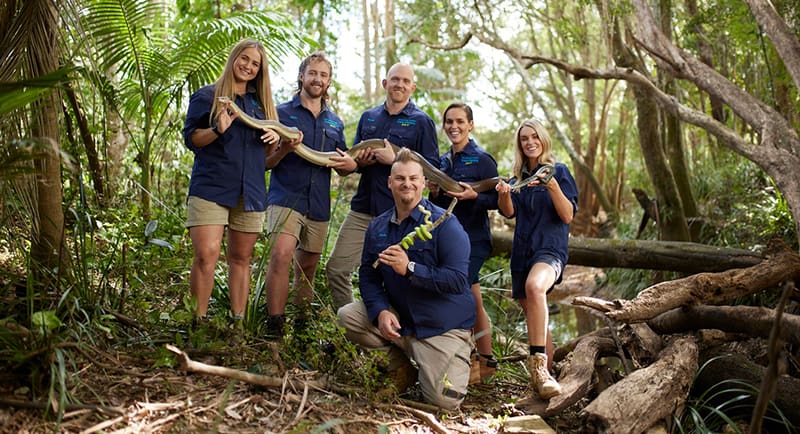Premiering Tuesday September 14 at 8.30pm AEST on National Geographic (Foxtel, Fetch and SKY NZ), Aussie Snake Wranglers is a new documentary series following the busiest snake catching team in Australia as they tackle some of the deadliest snakes on the planet.
This 16 part series, produced by Breakout Productions in partnership with the South Australian Film Corporation, will premiere weekly from September 14, and will be available on-demand via Foxtel, Fetch and SKY NZ.
Aussie Snake Wranglers is located in the surrounds of Queensland’s Sunshine Coast, and follows snake guru Stuart McKenzie and his snake catching team, as they work in one of the most active snake regions on the planet.
Each episode sees the team responding to calls from everyday Australians who find themselves face to face with these reptiles.
Over 20 different species call the area home, including the world’s second most venomous snake, the Eastern Brown snake, highly venomous red-bellied black snakes, whip snakes, giant carpet pythons, and more.
The team is led by venomous snake guru Stuart McKenzie, supported by some of the best snake catchers in the industry.
They include ‘Mullet Mick’, a classic Aussie larrikin who is not afraid to use his bare hands to tackle the biggest and most deadly snakes around. Adele, a no-nonsense country girl who trains birds when she is not out snake catching with her fiancée, Mullet Mick. ‘Pocket Rocket’ Jess, standing just five feet two, isn’t afraid to step in and get the job done, and show up the boys when she gets the opportunity. Chris, Stu’s best mate definitely prefers getting under Stu’s skin rather than wrangling brown snakes. And Olivia, who has been working with Stuart for over five years, loves getting stuck right into the snake catching and learning the ropes.
Each episode details three to five snake catches, and with the snake wranglers fitted with body-cam so the audience is brought right into the ‘strike zone’.
While some snakes are selected to take part in life-saving venom research, the remainder are immediately released safely back into the wild.
